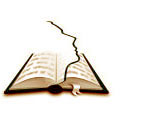In 1848 something new happened in the cottage of the Fox family, at Hydesville in the State of New York. The two daughters, aged 15 and 12, became aware of strange knockings and rappings that could be heard all over the house. The girls began to play a game with the knockings – ‘Do as I do!’ - and the knockings followed the requests. They then asked the knocking to count and asked how many people lived in the house The answer was right. By this time mother was involved and she asked how many children she had, for there were 5 children and one who had died. The answers came back accurately, but even giving the information details of the one who had died.
Modern spirit communication began with this single family. At first it was hated. Mobs gathered and the family were accused of being tricksters and seeking sensation. Six years later, however, spirit communication had spread in various forms throughout America and was becoming active in Europe. About this time in Europe, there had been a renewed interest in the occult and so the mood was right for the acceptance of new occult forms. In 1772 Emanuel Swedenborg believed a version of animism (like the worship of the spirits of the dead found in Africa). This early European phase of spiritualism involved ‘spirit writings‘, rather than the rappings and knockings of its rise in America.
In 1858 the first Spiritualist group was set up. By 1884 spiritualists made the claim, that never had any movement of a ‘religious’ nature gained so strong a following, in so short a time. In 1893 action was taken that the entire movement should be called a church.
Here are a number of the definitions which were adopted by the National Spiritualist Association in 1914 and reaffirmed in 1930.
Spiritualism is the Science, Philosophy and Religion of continuous life, based on the demonstrated fact of communication by means of mediumship, with those who live in the Spirit World. A spiritualist is one who believes, as the basis for his/her religion, in |
